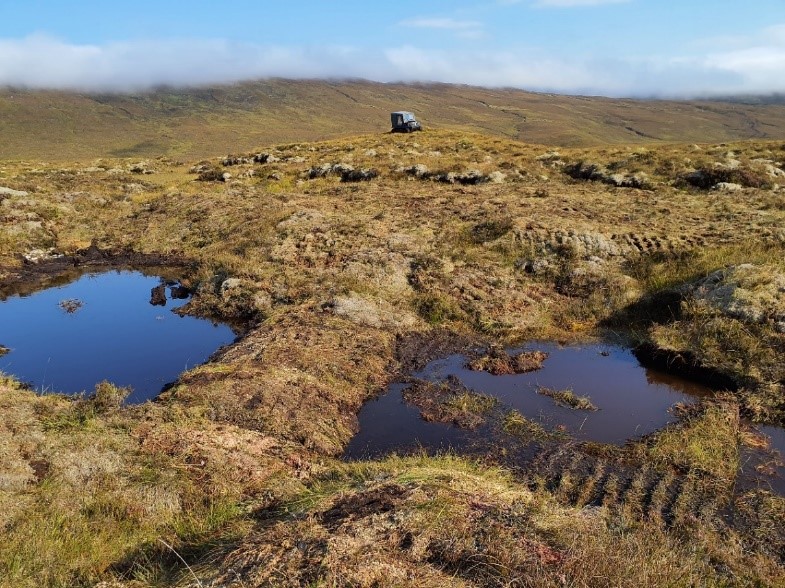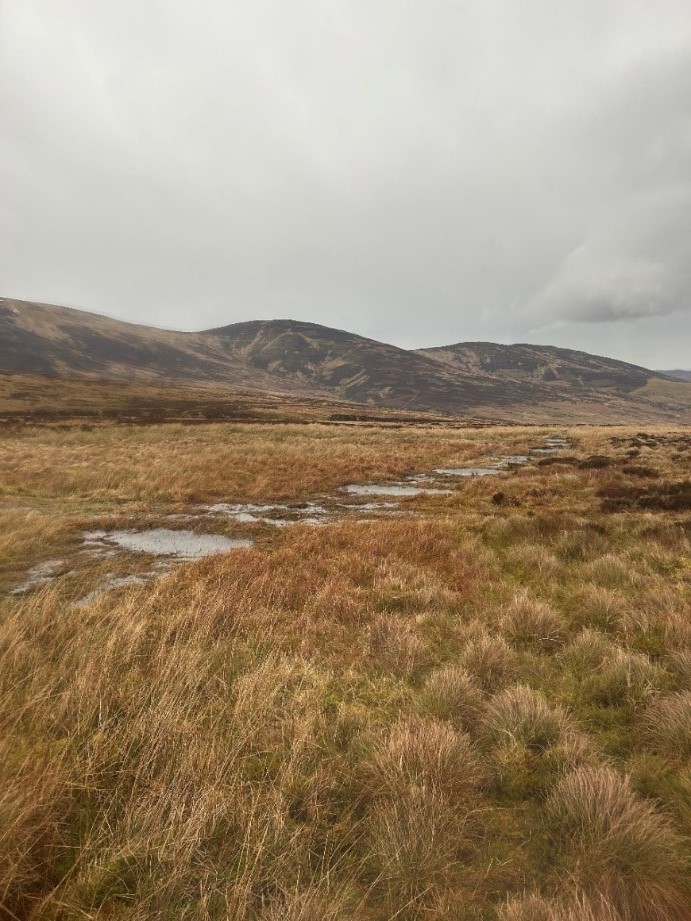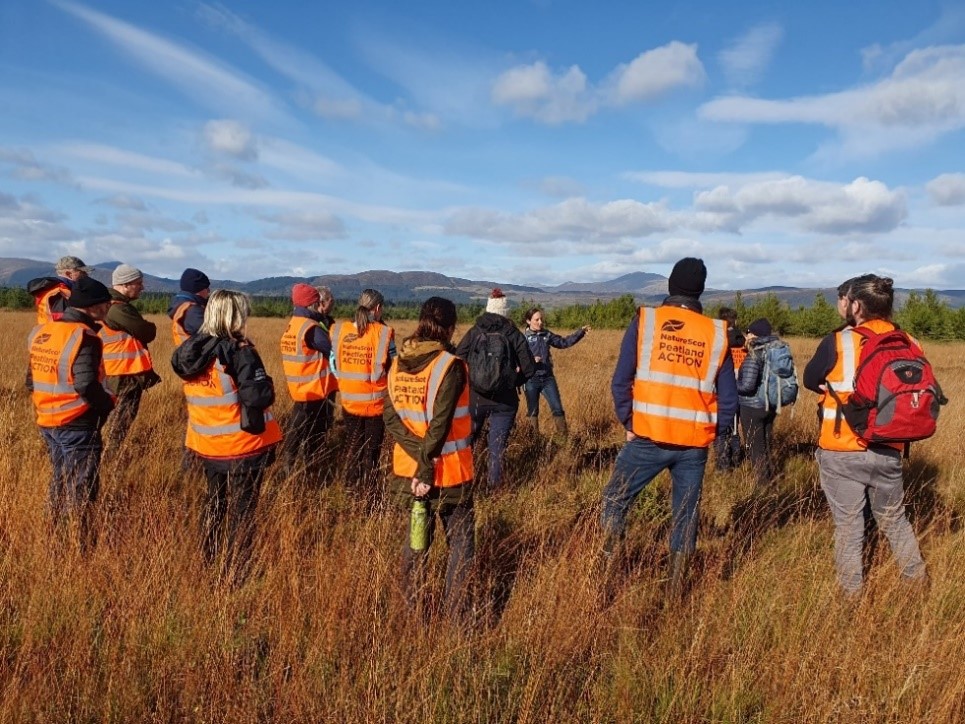
Shared Island Initiative Peatland
Programme (SIIPP)
The Shared Island Initiative Peatland Programme (SIIPP) is a partnership of National Parks and Wildlife Services (NPWS) (via LIFE IP Wild Atlantic Nature (WAN)), Northern Ireland Environment Agency (NIEA) and NatureScot, on behalf of the Peatland ACTION Partnership, to deliver peatland restoration, across the three jurisdictions of Ireland, Northern Ireland and Scotland. In addition to the delivery of peatland restoration, the objectives of the programme are also to build capacity for long-term peatland management, undertake research and monitoring, and address socio-cultural concerns while supporting collective work to meet climate change targets.
Using funding of €10m from the Shared Island Initiative, alongside €5m in additional funding from the NPWS and contribution of personnel from NIEA and NatureScot, the agencies are collaborating to conserve vital peatland ecosystems and reduce carbon emissions.
The cross-border peatlands restoration programme aims to reduce carbon emissions of 6,000 tonnes of carbon per year and restore 4,000 hectares of blanket bog within and adjacent to protected sites, across Ireland, Northern Ireland and Scotland.
The Government of Ireland has the responsibility for the overall co-ordination of the Shared Island Initiative Peatland Programme (SIIPP) which runs from 2023 to 2028.
Highlights
General
The first Shared Island Initiative Peatland Programme tripartite conference took place in Scotland in October 2024 with delegates from Scotland, Northern Ireland, Ireland and beyond participating. The second conference was held in Tyrone, Northern Ireland in October 2025. Delegates took part in themed workshops designed to share knowledge and experiences to help identify opportunities and overcome challenges in peatland restoration. Field trips offered the opportunity for delegates to visit typical restoration sites supported by the SIIPP and to see first-hand the benefits of peatland restoration. You can read more about the conference here.
SIIPP partners continue to hold monthly working group meetings, numerous webinars and on-line sessions to share information in relation to the funding, delivery and monitoring of peatland restoration. A further conference will be held in the south of Ireland in October 2026.

Ireland
A Shared Island funded restoration programme on Cuilcagh-Anierin Uplands SAC (Special Area of Conservation) is progressing across 250 hectares. Restoration action plans have been completed and reviewed with landowners prior to the commencement of the restoration on the ground. Delivery of materials required for the restoration commenced on site, some of which required helicopter deliveries due to the difficult terrain. A full suite of monitoring equipment is in place to ensure implementation efficacy in terms of project objectives.
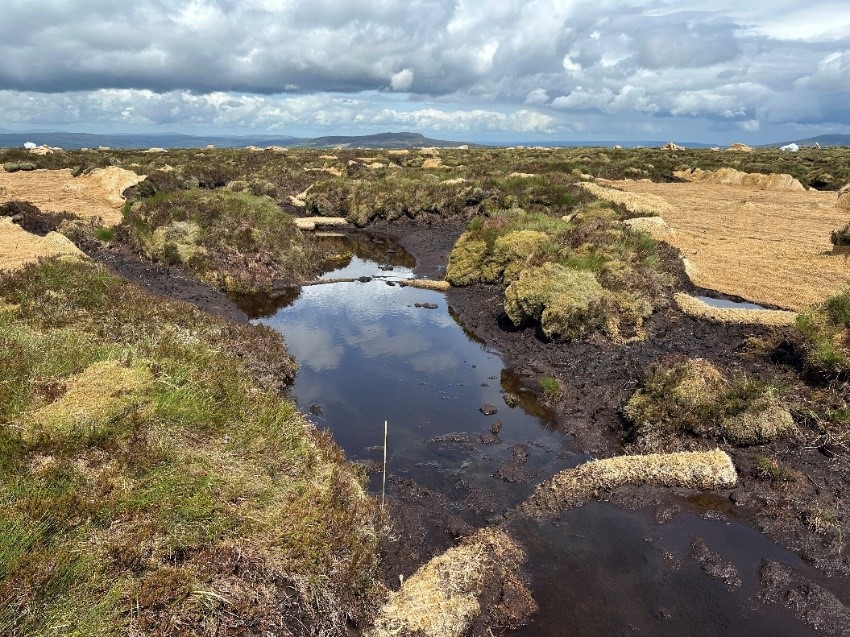
Design has commenced for the development of restoration plans for blanket bog planted with forestry in or adjacent to Special Areas of Conservation (SAC) sites in County Mayo. A site selection process has been completed for two sites with a third site under consideration. Planning permission is required for the removal of forestry and implementation of peatland restoration and planning applications for these Forest to Bog sites are currently being prepared.
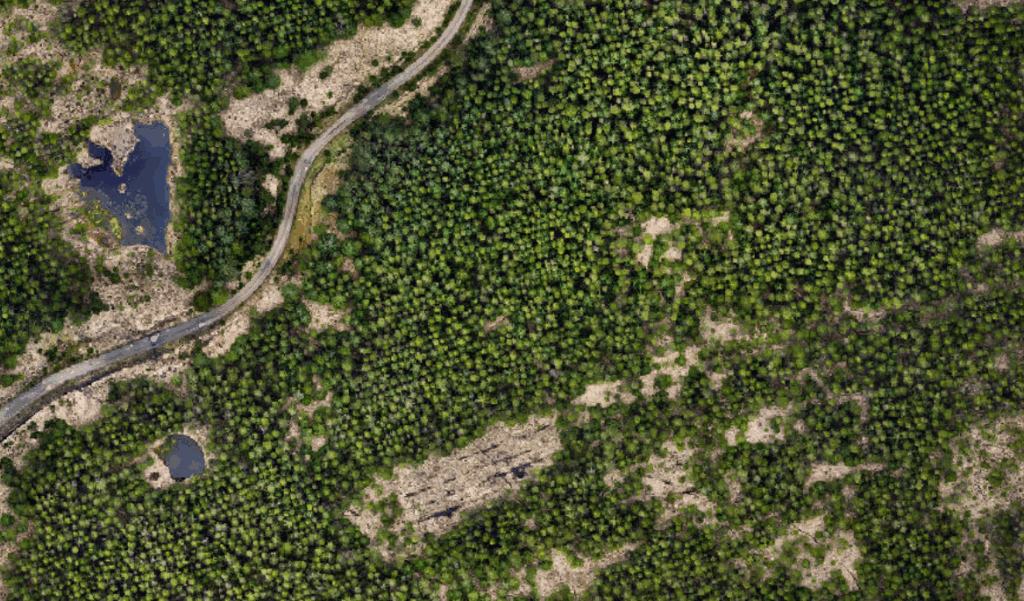
Peatland restoration training has been delivered, via the Scottish Crighton Carbon Centre, to over 150 stakeholders including staff from the Department of Agriculture, Food and marine (DAFM), Local authorities, National Parks and Wildlife Services (NPWS), Local Authorities Water Programme (LAWPro), Marine Institute, local communities, farmers and Agri-Climate Rural Environment Scheme (ACRES) Cooperation Project teams.
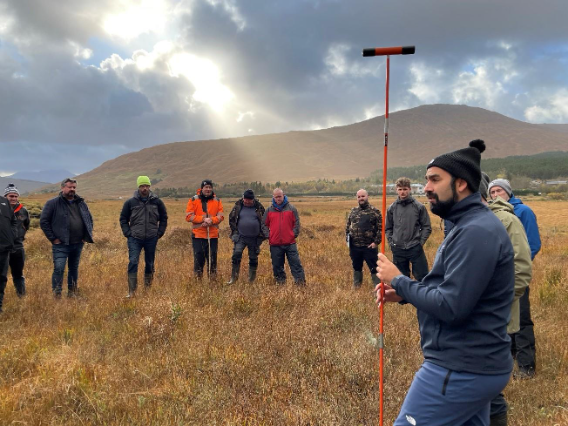
Northern Ireland
In Northern Ireland, a Peatland Challenge Fund (PCF) Programme is being administered using an existing and well-established model within the Department of Agriculture, Environment and Rural Affairs (DAERA) for working with environmental Non-Governmental Organisations (eNGO’s). The PCF grant process was open for applications with a minimum project delivery cost of £50,000 to allow for peatland restoration projects to be developed and implemented. Following an assessment of the applications received, five projects were selected for this fund. These five projects have all commenced their contracts and the results of their work will lead to on the ground restoration of 437 hectares on sites across the province and the development of restoration plans for over 6,000 hectares of peatlands in unfavourable condition.
Drain blocking has been completed in 180 hectares of peatland at Altikeeragh, an Area of Special Scientific Interest (ASSI) site on the northern coast through the work of the Causeway Coast & Glens Heritage Trust.
In 2021, using Source to Tap funding, Northern Ireland Water (NIW) restored 27 hectares of deforested land owned by Forest Service at Lough Braden near Omagh. The interventions including drain blocking (peat and plastic dams, infilling with brash), and installation of cell bunds. In 2025 a further 26 hectares were restored using similar techniques this time utilising DAERA Peatland Challenge Funding. To get to this point in 2025 it required a collaborative application between RSPB and Northern Ireland Water (NIW) to the DAERA Peatland Challenge Fund, negotiation for the removal of trees, the procurement of relevant consents and licenses and the engagement of specialist consultants and contractors.
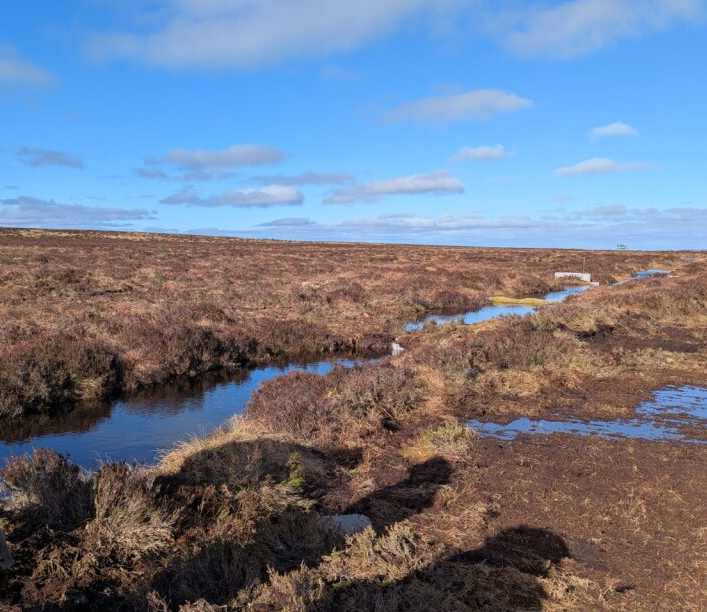
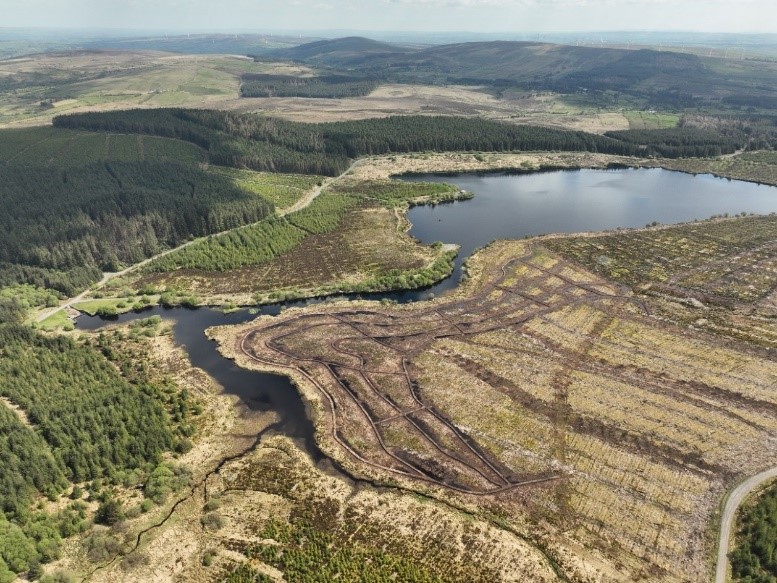
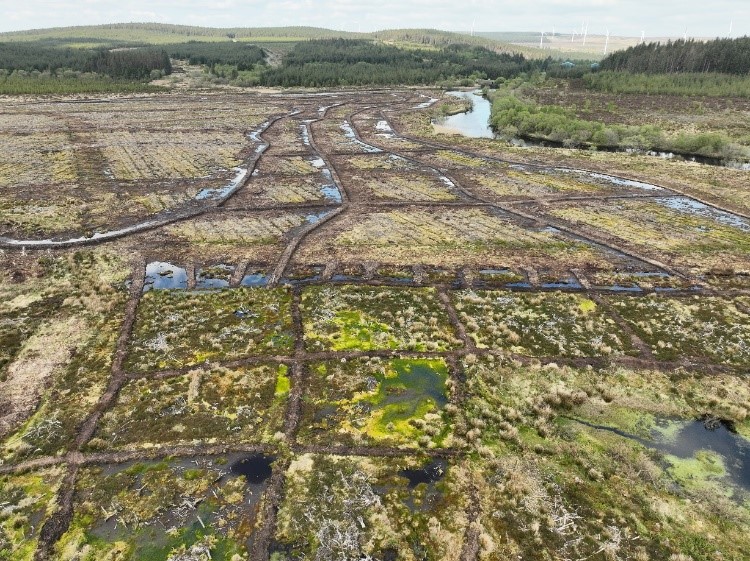
Scotland
NatureScot is the Scottish partner within the Shared Island Initiative Peatland Programme, representing Peatland ACTION – a national programme to restore peatlands across Scotland providing funding, support and advice to deliver on-the-ground peatland restoration. Peatland ACTION is funded by the Scottish Government and delivered in a partnership led by NatureScot alongside Cairngorms National Park Authority, Loch Lomond & the Trossachs National Park Authority, Scottish Water, and Forestry and Land Scotland.
Through the SIIPP, Scotland has focused on several key areas to support restoration work. These have included extending the operating season through use of a Peatland Restoration and Breeding Birds protocol, developing innovative techniques as case study trials and tackling complex erosion sites with challenging and complex factors.
NatureScot has also undertaken training of contractors, designers and advisers within public, private and third-level sectors across the Scottish mainland and islands.
Peatland restoration carried out under the scheme has been located across Scotland. Restoration techniques used on these sites has included drain blocking and reprofiling, tackling erosion and bare peat, scrub removal, revegetation work and a trial of the use of sheep’s wool to aid bare peat stabilisation.
